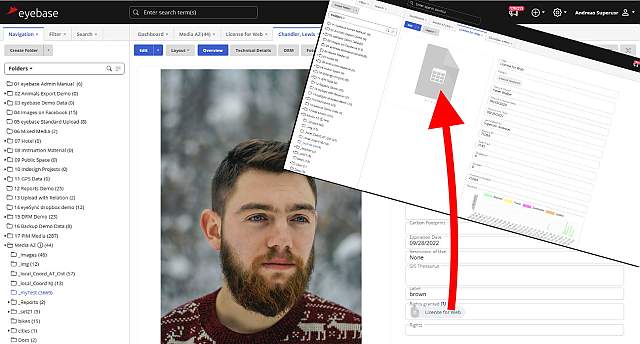Create relationships between any and all entities
eyebase uses a relational database to organize data into tables which can be linked, or related, based on data common to each. The primary benefit of the relational database approach is the ability to create meaningful information between different types of data.
As a simple example, a "products" table may have data fields for product_id, product_name, product_description, etc. Another table, "images," contains image records and its metadata. Some records in the images table contain photos of products. eyebase provides easy-to-use functionality to relate or link the product photo images to a specific product record.

eyebase provides several options to define the type of relationship between records, including One-to-One (1:1), One-to-Many (1:N), Many-to-One (N:1), and Many-to-Many (N:N).
Further, eyebase provides the opportunity to define multiple types of relationships within a single solution. Some examples include:
- One project related to many vendors
- One project related to one invoice
- One photographer related to many photos
- One project contains one video. Video can belong to many projects
- Project contains many images and the images can belong to many projects